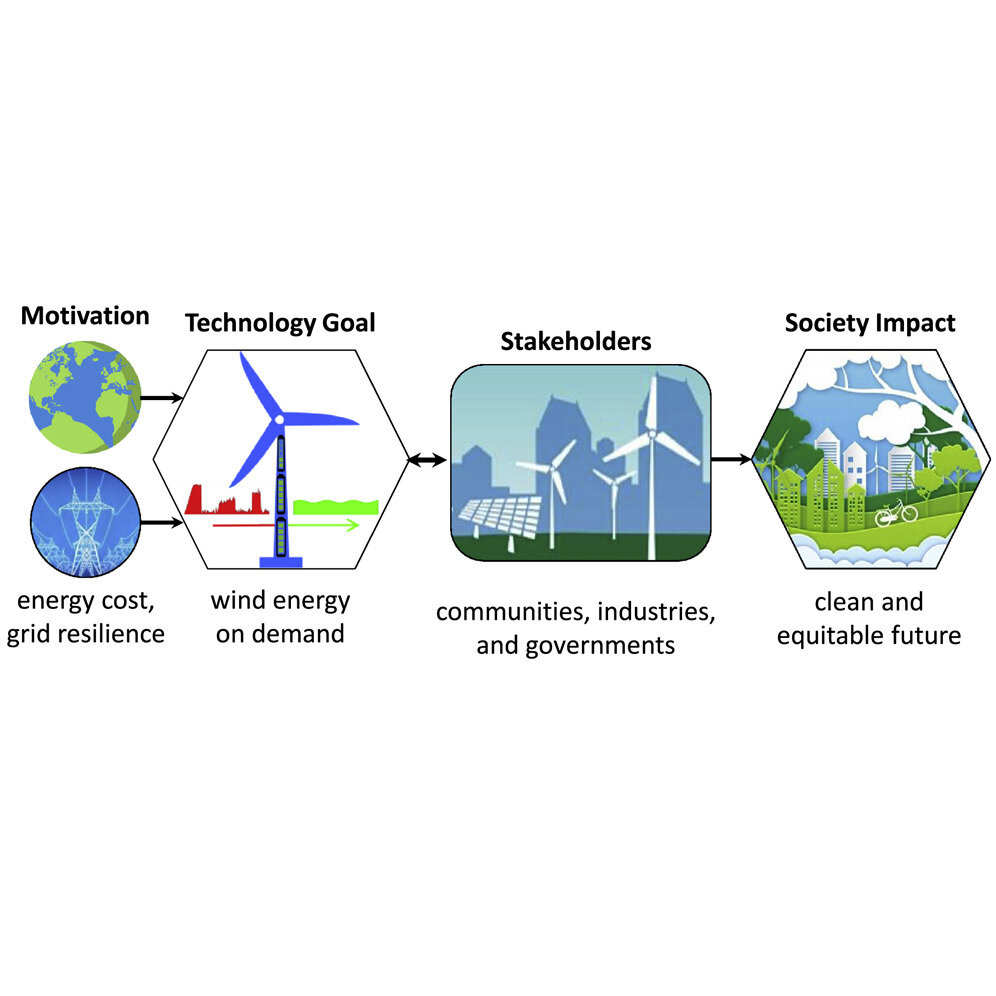Researchers explore wind farm co-design with communities
In past projects, Professor Lucy Pao and her research group have focused on designing the best control systems for wind turbines—systems aimed at maximizing power production or reducing structural loads.
However, their scope has begun to expand over the past decade, as they’ve started co-designing wind turbines with aerodynamicists and structural dynamicists.
“It was really interesting to see what the people from those sides care about,” Pao said. “When we co-designed all of these aspects together, we were able really to come up with much lower-cost designs.”
With their most recent project, published in the journal Joule, Pao and some of her collaborators teamed up with an even broader group of engineers and scientists. They began to look at what it would mean to bring communities into the process of designing wind farms. Could they co-design with public utilities or other community stakeholders in ways that reduce opposition to projects and better meet community needs?
The framework they propose “considers wind energy from a full social, technical, economic, and political viewpoint,” they wrote. Including all of those viewpoints, they say, can better address the full scope of a wind farm project—from cost and power-grid integration to community acceptance.
“Can we translate community needs into constraints on the engineered system?” Pao said. “What are they worried about? What are their concerns and what are their interests in wind or storage and their needs from the electrical demand side?”
She said communities often don’t know what options are available when a wind farm is proposed in their area. For instance, turbine blades can be slowed to have less of an impact on birds, or it might be possible to move the farm to another location if different storage methods are incorporated.
Pao added that the co-design process could even help reduce tensions around the growing sustainable energy economy.
“If that community has a coal power plant that’s shutting down because wind is going up, a co-design process could help them with the transfer of their knowledge and their capabilities so they can be part of this new technology,” she said.
As a next step in broadening her research group’s efforts, Pao and her collaborators are looking for funding to develop and test a concept for an integrated wind and hydropower system. The system would use “leftover” wind energy to pump water between lower and upper reservoirs, then releasing that water the next time wind speeds drop—turning the reservoir into wind-energy storage, in a way.
“We could try to work with communities to convey that by doing that, then you don’t need as big of a hydropower system,” Pao said. “Hopefully, that has a lower community impact overall.”
Michael J. Aziz et al, A co-design framework for wind energy integrated with storage, Joule (2022). DOI: 10.1016/j.joule.2022.08.014. www.cell.com/joule/fulltext/S2542-4351(22)00415-9
Citation:
Researchers explore wind farm co-design with communities (2022, November 22)
retrieved 22 November 2022
from https://techxplore.com/news/2022-11-explore-farm-co-design-communities.html
This document is subject to copyright. Apart from any fair dealing for the purpose of private study or research, no
part may be reproduced without the written permission. The content is provided for information purposes only.
For all the latest Technology News Click Here
For the latest news and updates, follow us on Google News.

